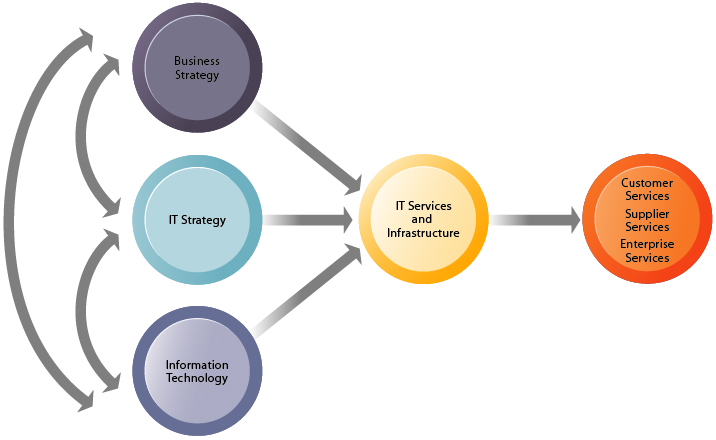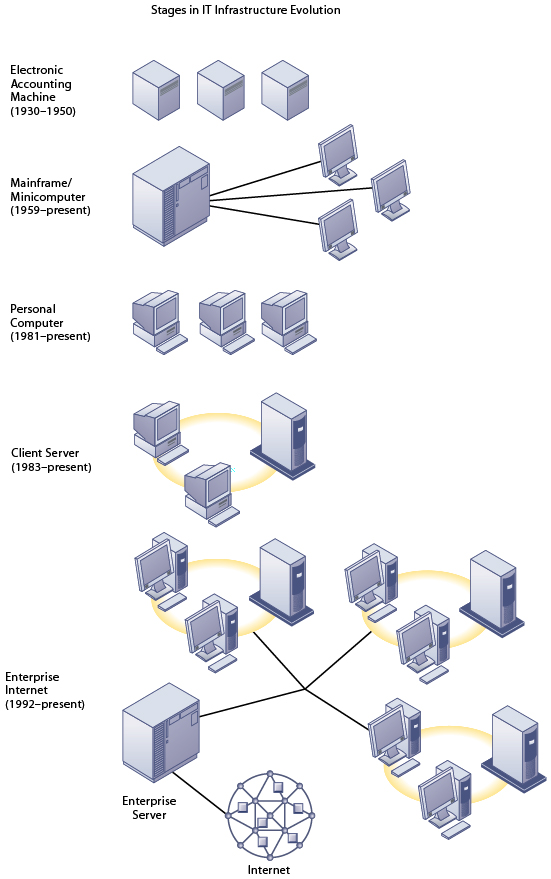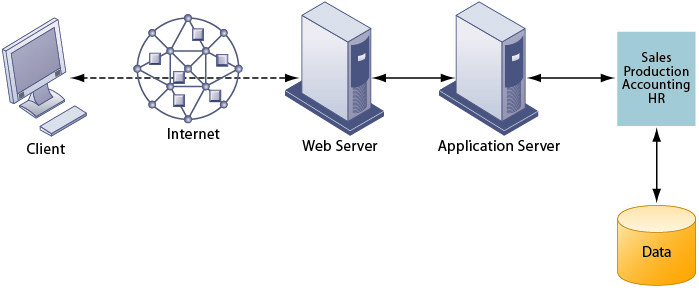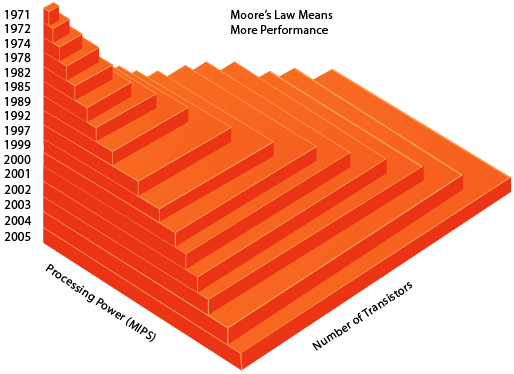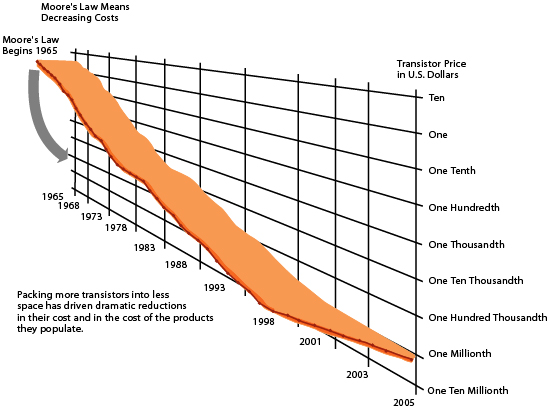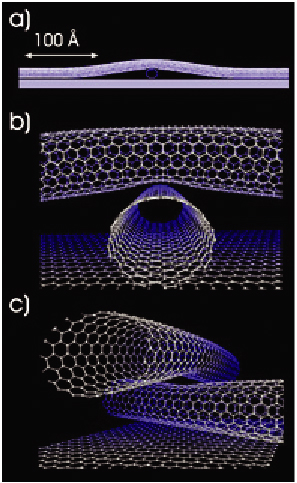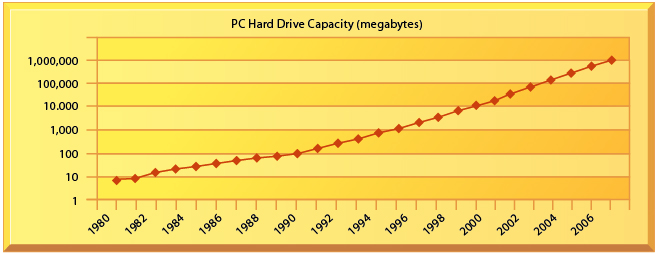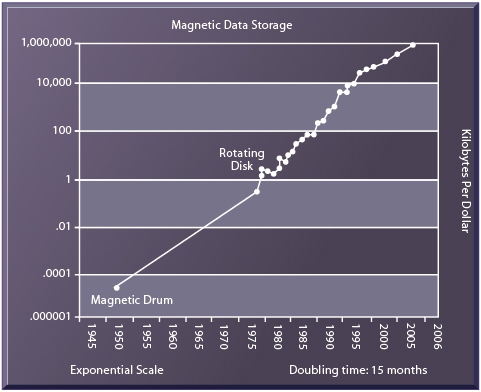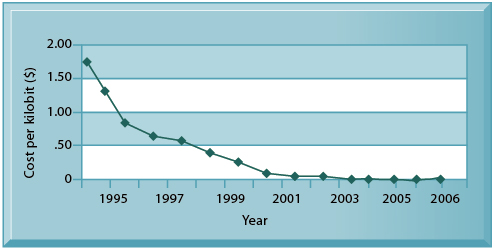IT Infrastructure
IT infrastructure provides the foundation for serving customers, working with vendors, and managing business processes. It defines the capabilities of the firm today and in the near term.
Figure 5-1
|
FIGURE 5-1 CONNECTION BETWEEN THE FIRM, IT INFRASTRUCTURE, AND
BUSINESS CAPABILITIES
The services a firm is capable of providing to its customers, suppliers, and employees are a direct
function of its IT infrastructure. Ideally, this infrastructure should support the firm’s business and
information systems strategy. New information technologies have a powerful impact on business and
IT strategies, as well as the services that can be provided to customers.
|
IT infrastructure can be seen as technology or as service clusters. The service-based definition focuses on the services provided by the hardware and software, such as computing platforms, telecommunications, physical facilities management, application software, data management, IT management, IT standards, IT educations, and IT research and development. The service platform perspective highlights the business value provided by IT infrastructure.
Five stages in the evolution of IT infrastructure can be identified:
Figure 5-2
|
FIGURE 5-2 ERAS IN IT INFRASTRUCTURE EVOLUTION
Illustrated here are the typical computing configurations characterizing each of the five eras of IT
infrastructure evolution.
|
1. Electronic accounting machine era (1930-1950): The use of large, cumbersome machines with hardwired software for sorting, adding, and reporting data
2. General-Purpose Mainframe and minicomputer era (1959-present): The introduction and continued use of mainframes. Mainframes were the first powerful computers that could provide time sharing, multi tasking, and virtual memory, and became powerful enough to support thousands of remote terminals. The mainframe era was a period of highly centralized computing controlled by programmers and system operators. Minicomputers, powerful yet less expensive computers, began to change this pattern, allowing decentralized computing customizable to individual departments or business units.
3. Personal computer era (1981-present): The appearance of the IBM PC in 1981 is usually considered the beginning of the PC era because this machine was the first to be widely adopted by American businesses. 95 percent of today's 1 billion computers are Wintel PCs, using Windows software and Intel microprocessors. PCs were standalone systems until PC operating system software in the 1990s made it possible to link them into networks.
4. Client server era (1983-present): In client/server computing, desktop or laptop computers called clients are networked to server computers that provide the clients with services and capabilities. Computer processing work is split between these two types of machines. The client is the user point of entry, whereas the server typically processes and stores shared data, serves up Web pages, or manages network activities. The term server refers to both the software application and the physical computer on which the network software runs. The server could be a mainframe, but today server computers typically are more powerful versions of personal computers.
In two-tiered client/server architecture, a client computer is networked to a server with processing split between the two. In multi-tiered (N-tier) client/server architecture, the work of the entire network is balanced over several different levels of servers. Distributing work across a number of smaller inexpensive machines cost much less than minicomputers or mainframes.
Figure 5-3
|
FIGURE 5-3 A MULTITIERED CLIENT/SERVER NETWORK (N-TIER)
In a multitiered client/server network, client requests for service are handled by different levels of
servers.
|
5. Enterprise Internet (1992-present): The Internet networking technology Transmission Control Protocol/Internet Protocol (TCP/IP) suite enables enterprises to link disparate devices and local area networks (LANs) into single enterprise-wide networks. Integrated computing environments allows for much faster and seamless gathering and distribution of data.
There are five important features or characteristics of information technology today that act as drivers toward the expansion and further development of technology. These include:
1. Moore's Law and Microprocessing Power: Moore's law stated in 1965 that microprocessing power doubles every two years. Variations of this law assert that
- Microprocessing power doubles every 18 months
- Computer power doubles every 18 months
- The price of computing every 18 months.
Figure 5-4, Figure 5-5
|
FIGURE 5-4 MOORE’S LAW AND MICROPROCESSOR PERFORMANCE
Packing more transistors into a tiny microprocessor has exponentially increased processing power.
Source: 2004 Intel Corporation; updated by the authors.
|
|
FIGURE 5-5 FALLING COST OF CHIPS
Packing more transistors into less space has driven down transistor cost dramatically as well as the
cost of the products in which they are used. An Intel® processors today can contain as many as 1
billion transistors, run at 3.2 GHz and higher, deliver over 10,000 MIPS, and can be manufactured in
high volumes with transistors that cost less than 1/10,000th of a cent. That’s a little less than the cost
of one printed character in this book.
|
Nanotechnology uses individual atoms and molecules to create computer chips thousands of times smaller than current technologies permit. Nanotubes have potential uses as minuscule wires or in ultrasmall electronic devices. Other technologies promise to further miniaturize transistors and improve chip technology.
Figure 5-6
|
FIGURE 5-6 EXAMPLES OF NANOTUBES
Nanotubes are tiny tubes about 10,000 times thinner than a human hair. They consist of rolled up
sheets of carbon hexagons. Discovered in 1991 by researchers at NEC, they have the potential uses
as minuscule wires or in ultrasmall electronic devices and are very powerful conductors of electrical
current.
|
2. The Law of Mass Digital Storage: The Law of Mass Digital Storage sees that while the amount of digital information produced worldwide doubles every year, the cost of storing digital information is falling at an exponential rate.
Figure 5-7, Figure 5-8
|
FIGURE 5-7 THE CAPACITY OF HARD DISK DRIVES GROWS EXPONENTIALLY
1980–2007
From 1980 to 1990, hard disk drive capacities for PCs grew at the rate of 25 percent annual compound growth, but
after 1990, growth accelerated to more than 65 percent each year.
|
|
FIGURE 5-8 THE COST OF STORING DATA DECLINES EXPONENTIALLY 1950–2005
Since the first magnetic storage device was used in 1955, the cost of storing a kilobyte of data has
fallen exponentially, doubling the amount of digital storage for each dollar expended every 15 months
on average.
Source: Kurzweill 2003, updated by the authors.
|
3. Metcalf's Law and Network Economics: In 1970, Metcalfe's Law described the value of a network grows exponentially with each increase in membership to the network. Demand for information technology has been driven by the social and business value of digital networks, which rapidly multiply the number of actual and potential links among network members.
4. Declining Communications Costs and the Internet: The rapid decline of communication costs and the exponential growth in size of the Internet are transforming IT infrastructure.
Figure 5-9
|
FIGURE 5-9 EXPONENTIAL DECLINES IN INTERNET COMMUNICATIONS COSTS
One reason for the growth in the Internet population is the rapid decline in Internet connection and
overall communication costs. The cost per kilobit of Internet access has fallen exponentially since
1995. Digital Subscriber Line (DSL) and cable modems now deliver a kilobit of communication for a
retail price of less than 2 cents.
|
5. Standards and Network Effects: Technology standards, specifications that establish the compatibility of products and the ability to communicate in a network, unleash powerful economies of scale and result in price declines as manufacturers focus on products built to a certain standard. Some of the important standards that have shaped IT infrastructure include ASCII, UNIX, TCP/IP, Ethernet, the IBM/Microsoft/Intel Personal Computer, and the World Wide Web.
|
